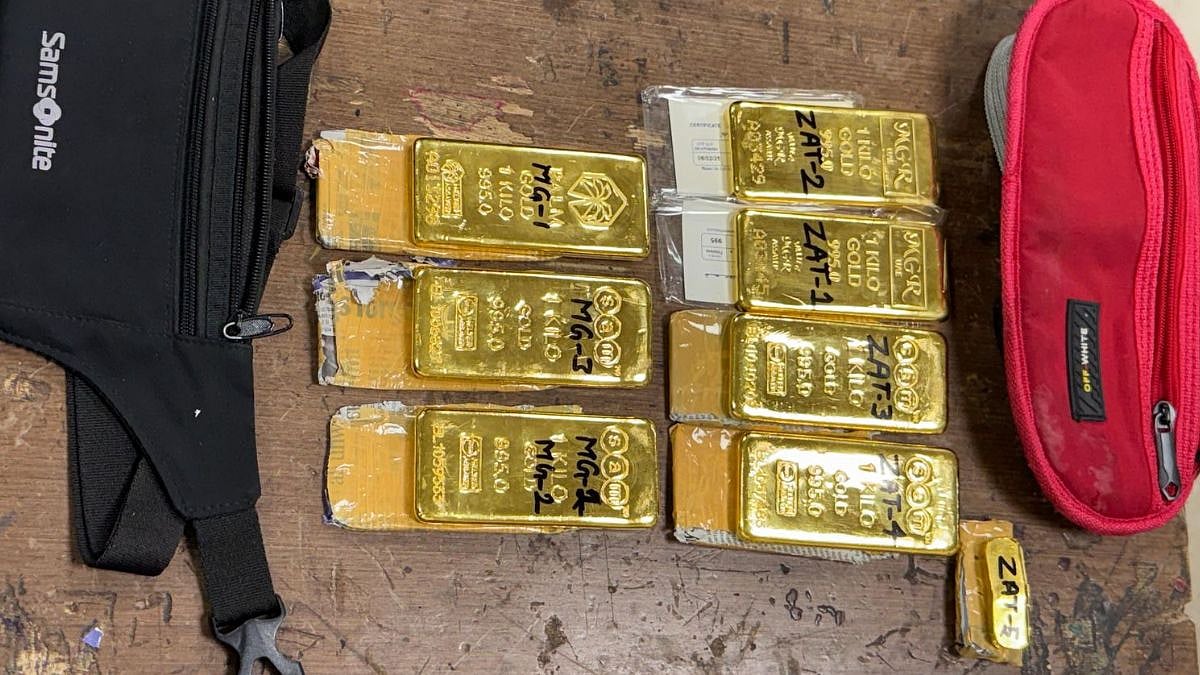In the vast tapestry of Hindu mythology, one encounters a fascinating array of deities, supernatural beings, and celestial entities. Among these mythical creatures, the benevolent-yet-mischievous yakshas hold a prominent position.
In Hindu mythology, yakshas are believed to have been created by Lord Brahma to serve and safeguard the natural order. Similar beings can be found in the mythologies of neighbouring cultures, such as the 'yakshis' in Buddhism and the nature spirits in the folklore of Southeast Asia.
Mumbai-based guitarist Aditya Mohanan's collaborative music project Yaksha draws on the mythos of these majestic, otherworldly beings. The first leg of Aditya's collaborative project features piano and handpan player Ishaan Zaveri, who features on the self-titled EP. Each performance of this experiential acoustic project works best when performed in a particular ecological setting and none is repeated twice.
Yaksha has a strong connect with Indian classical music traditions. Says Aditya whose day job involves archaeology and art history, “While training in Hindustani and Carnatic classical traditions, I started to realise that some ‘mistakes’, as people call it, ended up making certain phrases or structures more interesting. This led to my exploration, which is ongoing still – of how South Asian musicians approached improvisation as a process of discovery.”

Ishaan Zaveri on handpan | FPJ
The track 'Bhairav' is centred on the Hindustani raga Bhairav, and is a three-part improvisational rendering of the raga in the styles of Dhrupad and Carnatic music, blended with Western elements. It invokes Lord Shiva, naturally culminating in a fast-paced, Tandav-esque rendition of the raga. 'Lacuna' is based on the ragas Mohanam and Kalyani; the live recording took place in a lush green orchard in the outskirts of Mumbai.
Natural sounds of birds and insects from the orchard were retained in the live recording, in keeping with legend of yakshas having a close association with nature. Yakshas are known to inhabit forests, mountains, and lakes, where they guard hidden treasures and protect the natural world. “The background sounds on 'Lacuna' are not sampled, the crows and the crickets did in fact enjoy our music,” says Aditya who's also part of the stellar heavy metal band Midhaven. The band has just released a music video of the track 'ZHITRO' from their album 'Of the Lotus & the Thunderbolt'.
Legends often depict them as playful tricksters who enjoy testing the moral virtues of humans. In the Mahabharata, Yaksha-Prashna poses a series of philosophical questions to the Pandava prince Yudhishthir. He challenges the prince's understanding of righteousness and moral conduct, just like this improvisational music project that challenges our notions of how music is played.
As Aditya told FPJ, “You can close your eyes and lose yourself to our sounds, without having to expect what comes next. And one thing that we can do better than any studio artist or even an AI software – is making mistakes.”

Guitarist Aditya Mohanan | FPJ
Yakshas are nature spirits who make appearances in mythology as custodians of treasures hidden in the forest. What treasures does this Yaksha protect?
This Yaksha preserves one of the last vestigial elements of acoustic music in this newfangled concrete jungle – improvisation! This is a characteristic element of South Asian art that is increasingly being pushed into redundancy today. This Yaksha not only seeks to protect this particular element, but also seeks to contextualise it in today’s musical landscape.
The video for 'Lacuna' is an immersive experience. Where was it shot and how does the location reflect the song?
A lacuna is an emptiness between two things, the space between one and another, the gap between one word and the next. Somehow, Ishaan and I found comfort and elation in this little space, maybe hope. And for some reason, our sensibilities insisted for this song to be performed under a tree, surrounded by stems and shoots. But alas, we live in the aforementioned concrete jungle that is Mumbai.
So we found the patch of greenery closest to us – Aarey. Along with filmmakers David & Mehran, we randomly came across this majestic tree in Aarey Forest and immediately knew that this was where we wanted to shoot. Instinctively, we ended up doing two takes of 'Lacuna' under this beautiful tree, but the first one came out perfectly enough.
Watch the video for 'Lacuna' below:
An acoustic music piece in a different ecological that is never repeated is quite ambitious. How did you decide to embark on this?
While training in Hindustani and Carnatic classical subsequently, I started to realise that some ‘mistakes’, as people call it, ended up making certain phrases or structures more interesting. This led to my exploration, which is ongoing still – of how South Asian musicians approached improvisation as a process of discovery. And as it goes for all art, the meaning of a work changes depending on its context. We feed off our surroundings and use different settings to explore the same sentiment, but in a different context.
Since my first release 'Jungle Blues' in 2022, my collaboration so far has been with Ishaan Zaveri, a brilliant musician who knows how to wield the handpan with great skill. In fact, it was while working with him that I decided to concretise this improvisational project. But the very fundamental nature of this project decided to lend the lineup some fluidity by inviting all sorts of musicians and artists as and when the context dictates.
Yaksha's first single 'Jungle Blues':
The singles in Yaksha's debut EP have interesting titles like 'Bhairav,' 'Yaman' and 'Solipsis'...
From the get-go, this was meant to be a four-track EP. Two songs were products of ragas we were experimenting with, which are 'Bhairav' and 'Yaman'. The track 'Bhairav' was released some time ago and was shot by the ocean at sunrise. As Hindustani musicians do, we wanted to begin our performance by paying homage to the end, to the spirit of the deity Bhairav (Shiva).
'Yaman,' on the other hand, is an evening raga. Therefore, the performance emphasised on embodying the spirit of dusk, rather than focusing on musicality. There’s no structure, no melody necessarily, just a sonic ambience that we attempted to create. Not to forget, the sun was setting rapidly and everyone was in a state of panic, but we managed to get a pretty decent take nevertheless. Shoutout to David & Mehran for putting up with our painful demands.
Watch the immersive video for 'Bhairav':
Your metal band Midhaven is also inspired by mythology to some extent, taking metal in a different direction from the current bands in India. How much does your day job as an art historian and archaeologist influence your music and vice versa?
As an art historian/archaeologist, I’m usually knee-deep in the past (often quite literally). Insights I’ve gained over years of study and reflection end up informing the sounds I seek to produce, and vice-versa. I’m deeply concerned, on a conceptual level, with how philosophy, culture, and selfhood find their way into a work of art.
One can tell a lot about an artist’s world-view by exposing themselves to a work of art and also about the time they were inhabited. My primary concern/interest was to build a bridge between India’s musical heritage and its future… to become a cultural force that is constantly reinventing itself.
Which kind of indigenous instrumentalists are you keen on working with on Yaksha?
I’m actively looking for a bansuri player. The fact that one uses breath to produce sound from a reed never ceases to fascinate me. Furthermore, instruments such as the Ravanahatha from Rajasthan, the Ghatam from South India, and the Morsing / Morchang are some of the immediate examples that come to mind. Other instruments from all over the world, such as the double bass and even the didgeridoo, are instruments I will definitely incorporate into Yaksha someday.
What is your response to populists who say that an experimental project like Yaksha does not have wide appeal or “streaming potential”?
I’d ask them to get off their phones and come experience us in person, as human beings. I’d prefer being heard in a meadow or in a chamber rather than through a pair of earphones any day. You can close your eyes and lose yourself to our sounds, without having to expect what comes next. And one thing that we can do better than any studio artist or even an AI software – is making mistakes. So if not for anything else, come for our shows and laugh at us in person!










